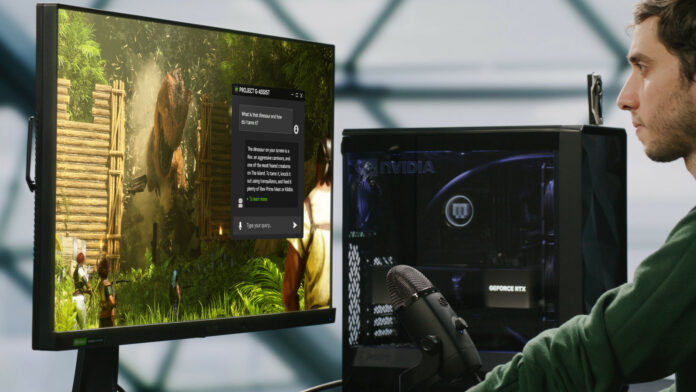During its Computex 2024 keynote, Nvidia has unveiled ‘Project G-Assist’, yet another feature for its GeForce RTX graphics cards powered by artificial intelligence. Pitched as a personal assistant, it promises to guide you in games and provide insight into ways you can improve performance through settings adjustments.
Features like Project G-Assist will never be as important as performance in separating the best graphics cards from paltry pixel pushers, but can greatly increase a card’s value. This latest addition to the Nvidia GeForce RTX bag of tricks looks to fit that bill. That said, there’s still every chance its sheen could disappear once it gets into the hands of gamers.
What is Project G-Assist?
As I sort of predicted back when Nvidia teased the return of G-Assist, this feature creates an AI assistant that provides guidance to players based on voice/text prompts fed into a large language model (LLM). G-Assist can also use visual prompts, taken from your PC, to better quantify your queries and return more helpful answer. The source of all this wisdom spouted by the LLM comes from a knowledge database, populated with data like game functions and item statistics.
Using Ark: Survival Ascended as a demonstration of its capabilities, Nvidia showed G-Assist responding to queries that were both short and general as well as long and specific. The detail of its responses is impressive, covering both item recommendations and game mechanics. It does this by communicating with a game knowledge database, presumably made by developers themselves. However, this kind of showing is par for the course with announcement materials.
Alongside gameplay guidance, G-Assist can also analyse your settings and provide recommendations on how to improve them. It seemingly knows the native refresh rate of your display, identifying whether you’ve absent-mindedly limited yourself to 60Hz on a 240Hz screen. In this particular example, though, you’d surely feel this through a game’s input latency before needing an AI assistant to point it out to you. More impressively though, G-Assist can even apply safe overclocks as well as reduce power consumption to maintain a particular performance target.
Project G-Assist analysis
If its promise holds up, the performance management side of G-Assist sounds like the more compelling use case of the feature. Given how impenetrable configuring PCs can be for newcomers, it could prove a useful tool in eliminating busywork fiddling with settings. Of course, I’d sooner defer to benchmarks and tests conducted by outlets like ourselves, but it’s a good starting point.
Its guide functionality causes some discomfort for myself though. Whenever I’m in need of assistance in a game, whether it’s in constructing a build, finding an item, or solving a puzzle, I enjoy the personality and discourse that comes from writers from publications and forums with both their subjective and objective answers. G-Assist doesn’t offer any of that. Not that it can, but I would hate for this to be end of a long tradition of sharing among gamers, from which thriving and passionate wiki communities have formed. After all, I highly doubt this feature will uncover off-the-wall builds like we’ve seen in Elden Ring.
There’s sadly no word on when G-Assist will arrive, nor which graphics cards will support it. However, it’s likely that Ark: Survival Ascended will be the first game to support the technology. When it does show up, we’ll be sure to take it for a spin and put its capabilities to the test.
For more Computex news, we’ve got all the details on Nvidia’s new SFF graphics card form factor.


